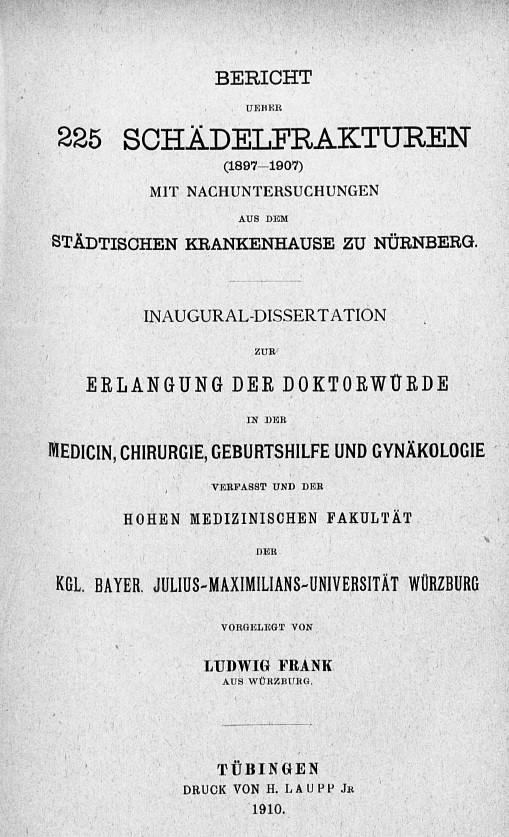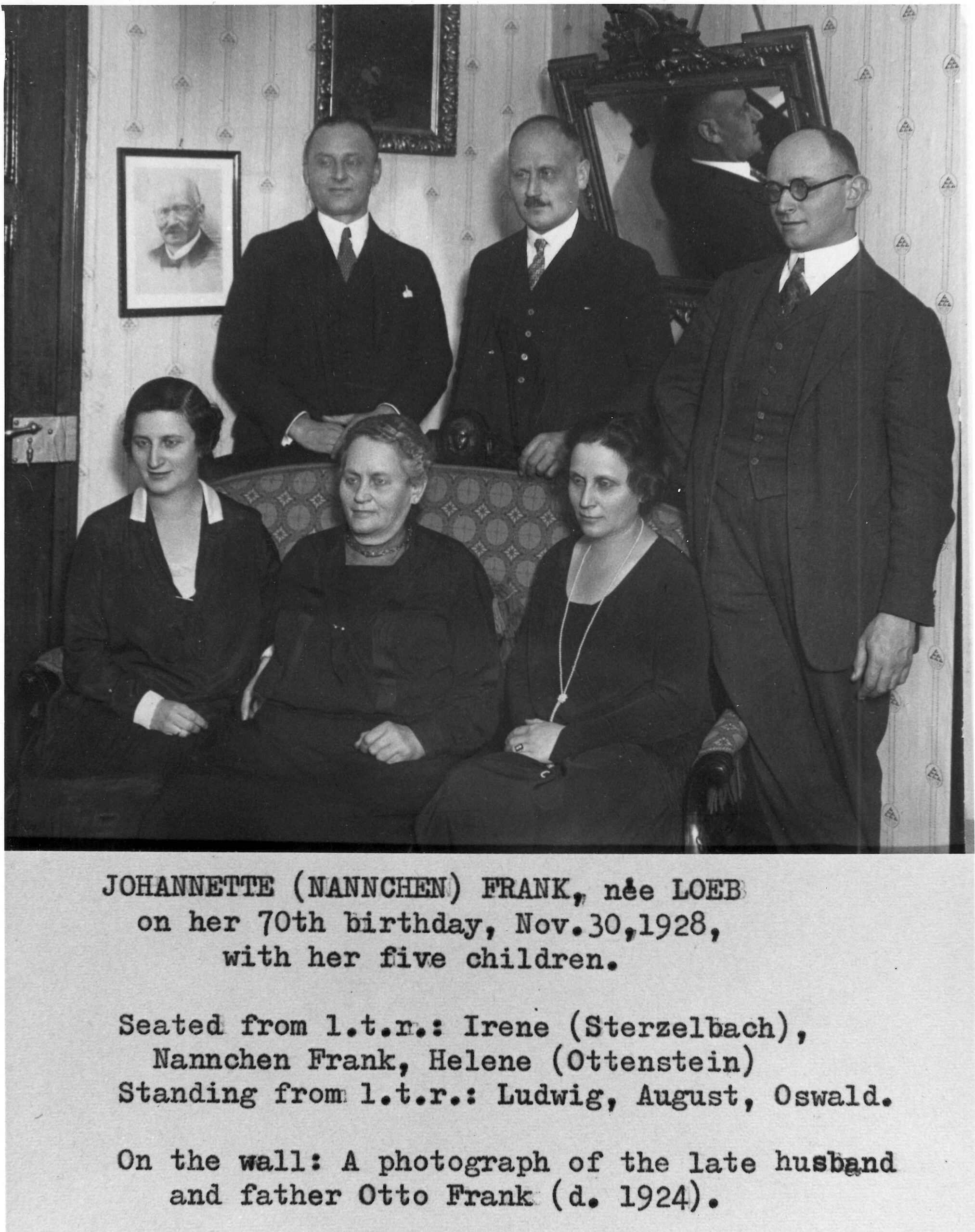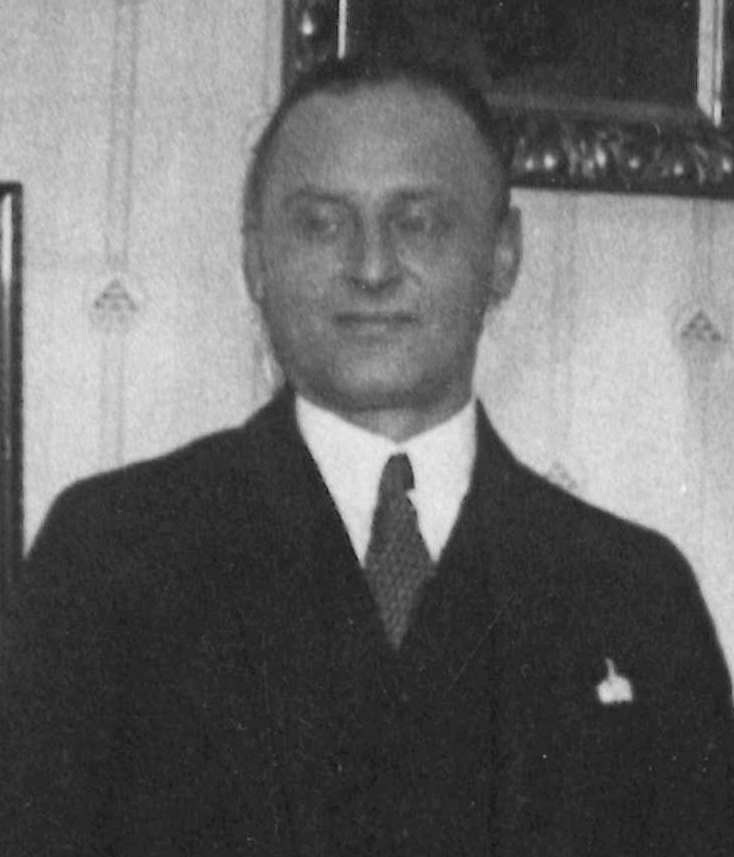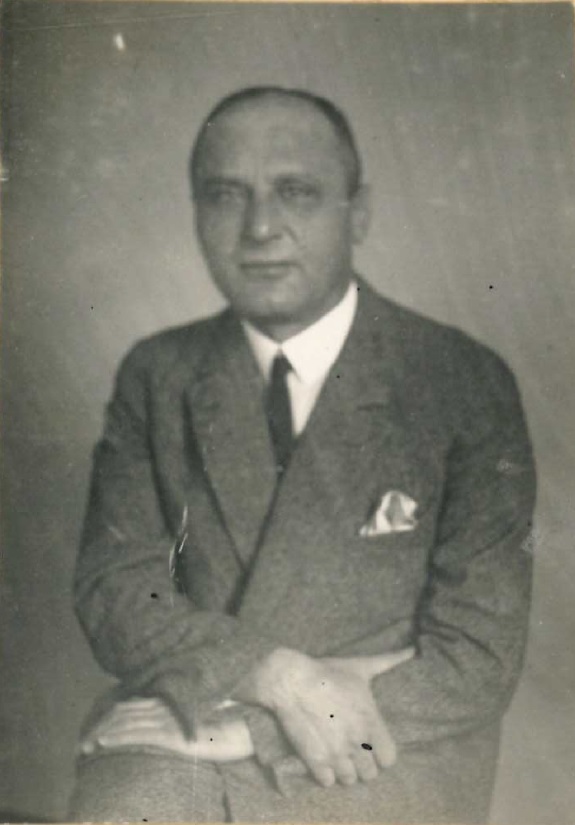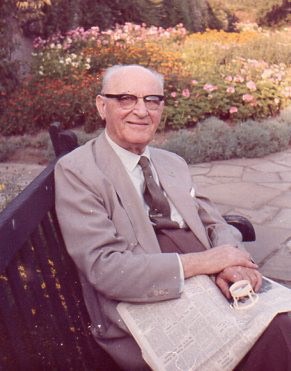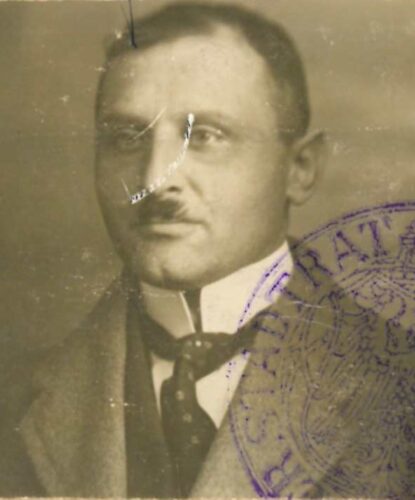Dr. med. Ludwig Frank
- Würzburg, 18.10.1884
- London, 25.02.1976
- Member since 1926
- Escaped to the USA in 1937
- Nuremberg
- Specialist in gastrointestinal and metabolic diseases in private practice
“I, Ludwig Frank from Bavaria, was born in Würzburg on 18 October 1884 as the son of the wine merchant Otto Frank. After attending primary school and the humanistic [Royal] Neues Gymnasium in Würzburg, I obtained my school-leaving certificate in Würzburg on 14 July 1902, where I enrolled at the university in autumn 1902. I studied in Berlin during the winter semester 1905/06. I took the medical state examination in Würzburg and was licensed as a doctor in December 1907,” Ludwig Frank states in his dissertation. His father Otto Frank had been running a wholesale wine shop in Würzburg since 1873. Ludwig Frank’s mother was Johannette Frank, née Loeb, who was born into a large, respected Jewish merchant family in Worms-Abenheim.
Ludwig Frank obtained his doctorate from the University of Würzburg in 1910 with the thesis “Bericht ueber 225 Schädelfrakturen (1897 – 1907) mit Nachuntersuchungen aus dem Städtischen Krankenhaus zu Nürnberg”.
Education and Workplaces
Ludwig Frank received his clinical training at the Nuremberg Municipal Clinics from 1st January 1908, which had over 1,100 beds at that time. Frank initially settled in Nuremberg as a general practitioner in 1912. He actively participated in the First World War as a military doctor, mainly on the Western Front, from 1914 onwards. After the end of the war in 1918, he specialised in gastroenterology. The Reich Medical Calendar (“Reichsmedizinalkalender”) of 1926 lists him as a specialist in gastroenterology, intestinal and metabolic diseases in Nuremberg. His practice was at a prime location in the centre of Nuremberg on the corner of Königstrasse and Bankgasse.
Ludwig Frank married Gretchen (Grete) Ottenstein in July 1912. She came from a Jewish merchant family in Nuremberg. Her sister was the dermatologist Berta Ottenstein, who worked at the University Dermatological Clinic in Freiburg until 1933.
Frank had a wide range of cultural interests. He actively played the piano and flute from his youth until the age of 70. He was a member of the old, liberal Nuremberg lodge “Zu den drei Pfeilen” and he participated in the Deutsche Morgenländische Gesellschaft, the scientific association of german orientalists. He was a member of the medical professional organisations and a board member of the Nuremberg Medical District Association. When the Nuremberg Theresien Hospital was opened in 1928, Ludwig Frank was given the opportunity to care for the patients in his field as in-patients at this hospital until 1933.
From 1933
As a Jew, Frank was exposed to the persecution of the National Socialists and experienced the doctors’ boycott on 1 April 1933. On this day, an SA guard marched in front of his practice and prevented patients from entering. Frank was mobbed and threatened by the National Socialists. He realised early on that it was not possible for him to practise medicine under the Nazi dictatorship. On 5 June 1934, he deregistered in Nuremberg, left Germany and went to Jerusalem in then-Palestine. However, he was unable to gain a foothold there. Three years later he decided to move to the USA with his family. On 2 July 1937, 52-year-old Ludwig Frank and his wife Grete arrived in the USA, New York, from Cherbourg, France, on the S.S. Berengaria operated by the Cunard Line.
After taking language examinations and passing the American state examination, he joined the medical staff of the Staats Hospital in Charleston, West Virginia, founded by Dr. H. H. Staats, as a gastroenterologist at the end of 1938, a position he held until July 1954. Dr. Harry Cobliner a gastrointestinal specialist who had fled Cologne, was his colleague at the Staats Hospital in Charleston.
His wife Grete Frank-Ottenstein died in April 1954. Ludwig Frank married Rosa (Rosl) Haynes (formerly Hahn), née Loewi, who came from Nuremberg and lived in London, in August 1954. Frank moved from the USA to Great Britain. Frank devoted his retirement to medical historical topics and completed a lengthy further education course on this subject at Yale University, New Haven, from September 1958. Ludwig Frank returned to London in 1961.
Ludwig Frank died in London at the age of 91 on 25 February 1976. His second wife Rosa Frank died aged 95 in February 1993.
Ludwig Frank’s mother Johannette Frank had to leave her house, where she had lived for more than 40 years, on 2 January 1939. From then on she had lived at the Israelitisches Kranken- und Pfründnerhaus/Altersheim (senior citizens home) at Konradstrasse 3 in Würzburg. She was deported to the Theresienstadt/Terezín ghetto at the age of 83 on 23 September 1942. She died at the ghetto on 11 October, 1942. Her house at Rottendorferstrasse 9 in Würzburg had to be sold in 1939 under pressure from the Nazi authorities. So were other houses and properties belonging to the Frank family. Their assets were confiscated by the GESTAPO during their deportation and forfeited to the German Reich.
The eldest brother August Frank was already arrested the day before the November progrom in 1938 and deported to the Buchenwald concentration camp. After their release from the concentration camp, August Frank and the younger brother Oswald Frank fled to the USA in 1939. The sister Helene Ottenstein reached Great Britain. The second sister, Irene Sterzelbach, fled to Montevideo, Uruguay, in 1939. She returned to Europe after 1945 and lived in Great Britain until her death in England in 1991.
Acknowledgements
We are most grateful to Professor Norma C. Moruzzi, Chicago, Ludwig Frank’s grandniece, for important documents, especially for the unpublished family history, written to a large extent by Ludwig Frank, and for photographs. We would also like to thank the staff of the Nuremberg City Archives for their research and for providing Ludwig Frank’s registration and passport cards.
Biography translated by Rachel Hinterthan-Nizan
Sources and Further Reading
Sources
